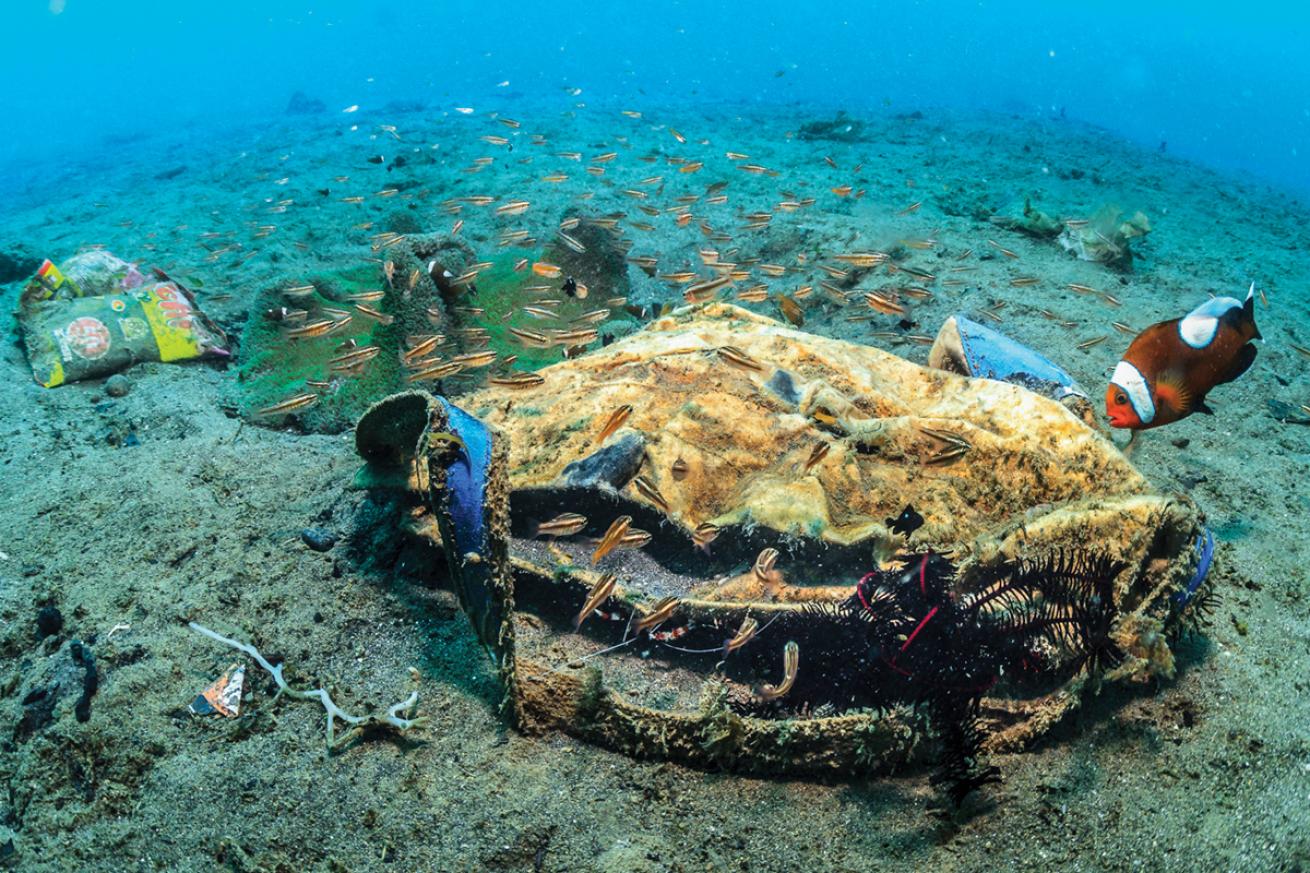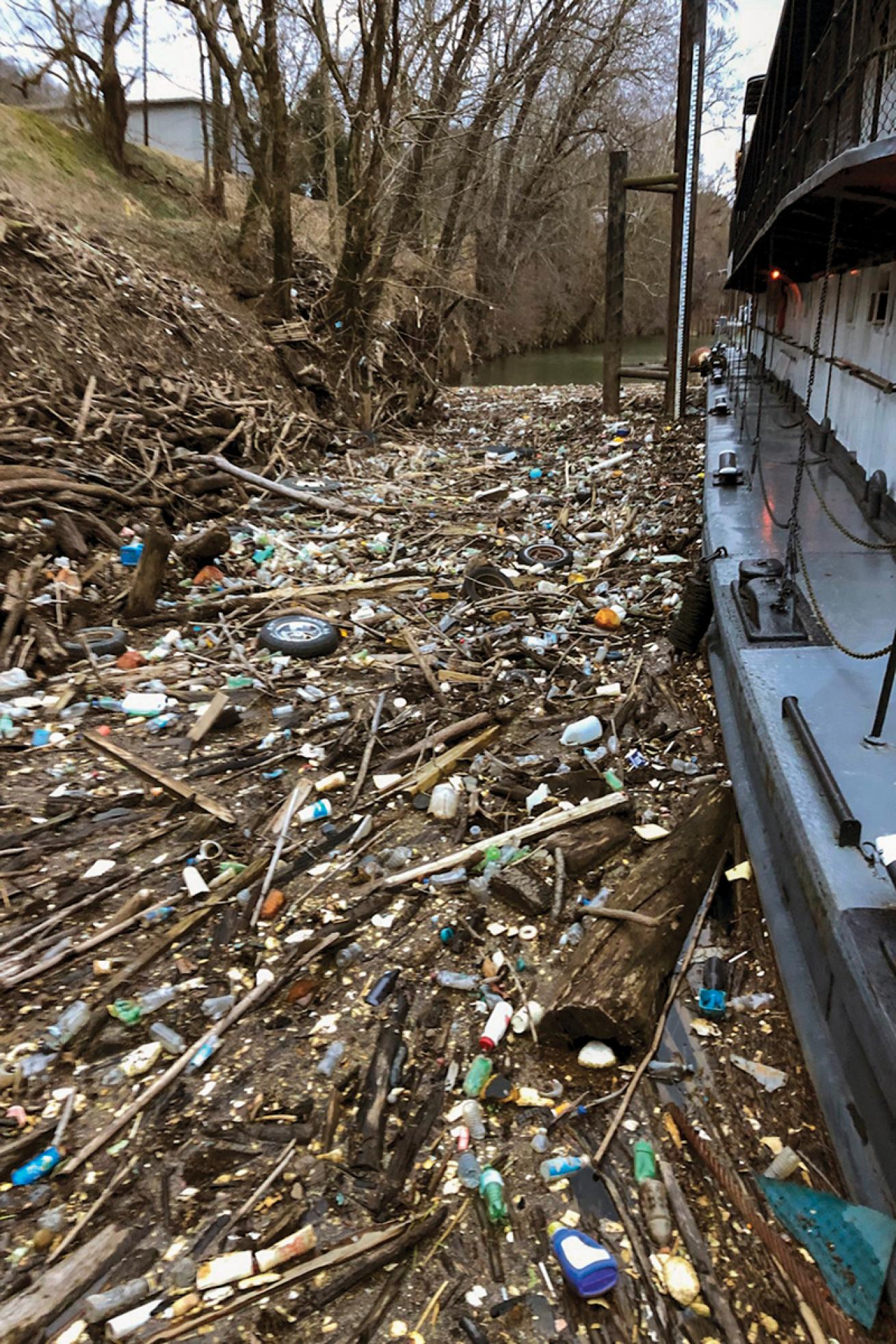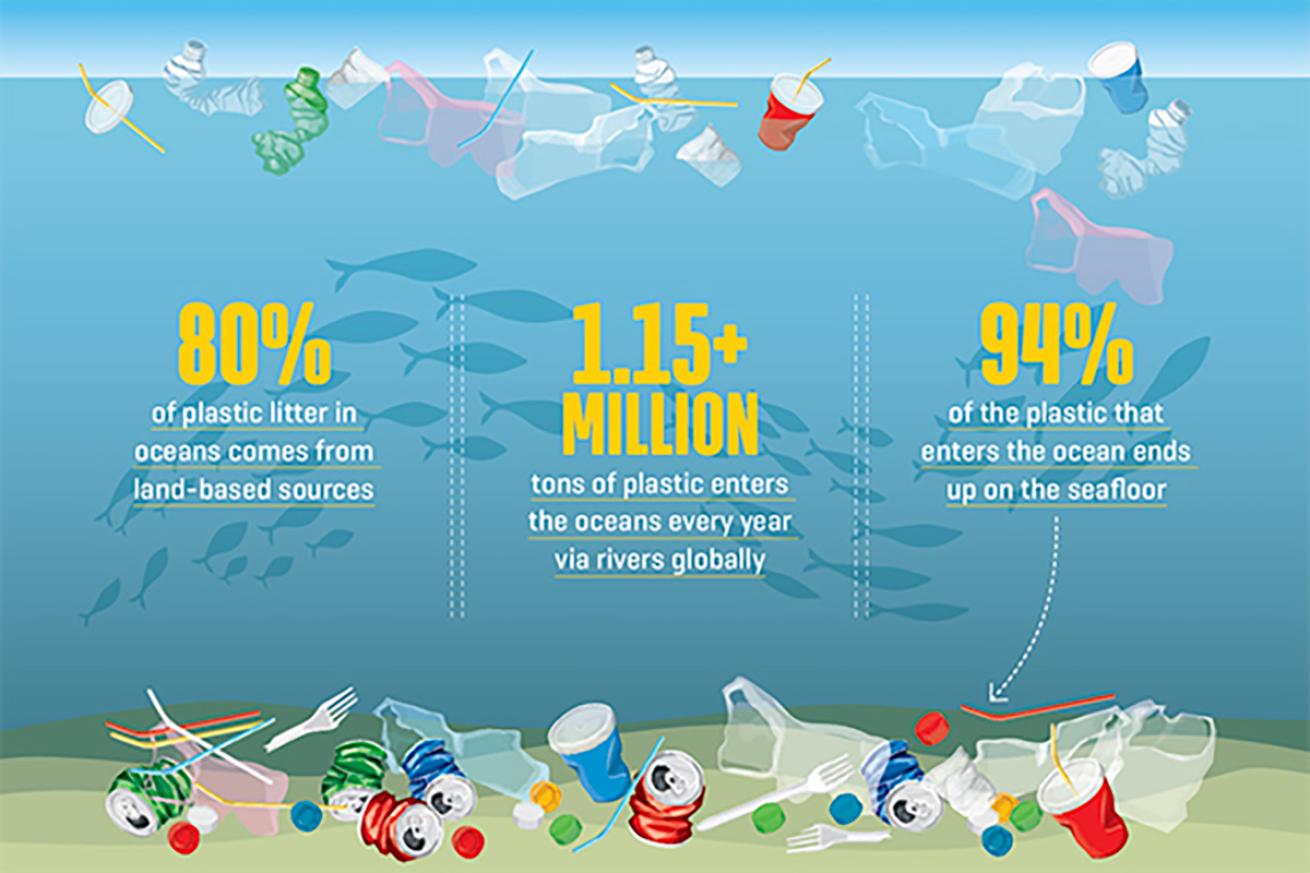River Pollution Makes the Ocean's Plastic Problem Worse. Here’s How to Stop It.

Tobias FriedrichAn anemonefish inspects a discarded bag near Anilao, Philippines.
When you hear about plastic in the ocean and feel helpless to do anything, it's important to remember that’s not true. We all have the responsibility to do our part. Even those of us who aren’t lucky enough to live by the beach. It’s all connected, and we are all in this together.
It had been raining hard the past few days. Spring rains had arrived after a long winter and I knew what to expect, but I was still shocked when I saw the Kanawha River. Plastic bottles, coolers and other man-made refuse swirled among the tree branches and other natural debris washing downstream. It was—literally—trashed.
Ocean pollution is a global problem. Plastic has been found on the seafloor of the deepest trenches. We hear horror stories of enormous floating garbage patches, as well as microplastics that make their way into the water we drink and the food we eat after being broken down by ocean currents, salt and the sun.
But where does it all come from? The technical term is “nonpoint source pollution,” meaning there is no single source of this plastic debris. In short, it comes from everywhere.
A 2017 study published in the journal Nature Communications estimated between 1.15 and 2.41 million tons of plastic enters the oceans every year via rivers globally. And research by UK-based Eunomia Research and Consulting shows that more than 80 percent of the annual input of plastic litter, such as drink bottles and plastic packaging, comes from land-based sources. The rest comes from plastics released at sea, such as discarded fishing gear.
A GLOBAL PROBLEM
I live in West Virginia, near the intersection of the Elk and Kanawha rivers. The Kanawha is navigable and has loads of barge traffic. The Elk is smaller and better suited to kayaks and trout fishing. But when the rivers rise due to heavy rains, as they did last spring, a tremendous amount of trash flows downstream. It gets ugly.
Eric Gardner, a commercial diver on the Kanawha and Ohio rivers, says he’s troubled by the amount of trash he sees. He is in both rivers year-round doing maintenance on tow boats, barges, spillways and everything else that crosses the river. The trash collects at locks and dams that aid barge movement. It builds up in large floating islands and can foul locks. He describes having to push islands of trash out of his way to do his work. Sometimes the trash obscures the sun while he is underwater. “You will have an island full of trash, different debris, tires, refrigerators. Anything plastic just floats,” he says.
The U.S. Army Corps of Engineers maintains the locks and dams on all navigable waterways in the United States. Chuck Minsker, a representative from the Huntington District, which maintains the locks on the Kanawha, explained that there isn’t a safe and cost-effective way to separate the trash from the natural debris that collects at the dams, so the agency treats plastic debris like natural debris, sending it all on its way down the river.
“It’d be nice if we could come up with a plan and try to work with the Army Corps of Engineers to stop this from happening,” Gardner says.
The Kanawha flows into the Ohio, which joins the Mississippi and eventually makes its way to the Gulf of Mexico, where it floats into the ocean, potentially going anywhere in the world.
Everywhere in North America—and most of the world—is in a watershed. Much like the Kanawha, the creek in your backyard leads to larger streams and then to rivers, and eventually to the ocean.
A few years ago, I was on the Moskito Coast of Honduras doing research for an unrelated project. Heading out into the more remote areas (from an already remote area) I was stunned to see millions of plastic bottles washed up 3 feet thick along natural coves on the islands. It was heartbreaking.
You might be asking, why should I care if there are huge piles of trash in Honduras? The answer is that, ultimately, the plastic could have come from anywhere. No doubt some of it came from locals who don’t have adequate trash disposal systems. But it is also just as likely that some—or most—of the plastic came from the United States. It’s even possible that some of that plastic made its way to Honduras from the river in my own backyard. It’s not hard to imagine an indestructible floating object making its way from the Gulf of Mexico to Honduras.
And if we want to keep plastic out of the oceans we love, persuading countries in Central America or elsewhere outside the United States to clean up their act is much easier if we set a good example ourselves.
Most of the divers I know (like myself) live inland, away from the beaches or islands. We can only visit on vacation. That is reality. That doesn’t mean we can’t help keep the ocean clean. We can still do our part. It isn’t just someone else’s problem.

Eric GardnerRivers move local pollution hundreds or thousands of miles, turning local litter into global ocean pollution.
ALL TOGETHER NOW
You’ve likely heard the line “think global, act local.” It is easy to be overwhelmed and discouraged about the presence of plastic in all the places it shouldn’t be.
But rather than lose hope, the best thing you can do is act at home. You might not be able to do anything about the bigger world problems, but if we all improve just a little bit, think of the difference that will make.
The first step is to use less plastic. Use refillable water bottles and refillable coffee mugs. Use reusable grocery bags instead of the one-time-use bags. The less plastic we use in the first place, the better. It’s not always possible to avoid plastic packaging, but making sure it is recycled is a great alternative.
For those of us who live on a watershed but away from the ocean, organize a river cleanup. Less trash upstream guarantees it doesn’t flow downstream when the rains come. You might not be able to clean up trash at a dam, but you can definitely clean it up from river banks.
Even more basic, when you go to the water, pick up a couple pieces of trash and dispose of them. It doesn’t take that much effort. I have friends who like to hike, and they always make sure they take a trash bag with them.
Talk to officials in your town to make sure there are plenty of trash cans that are picked up regularly and are easily accessible. If they aren’t actively recycling plastic in your community, put pressure on those leaders to get it started.
When you hear about plastic in the ocean and feel helpless to do anything, it's important to remember that’s not true. We all have the responsibility to do our part. Even those of us who aren’t lucky enough to live by the beach. It’s all connected, and we are all in this together.

Shutterstock.com/LEEDSNPlastic pollution doesn't disappear. Plastic breaks down into continually smaller pieces of litter called microplastics, which have been found from the ocean depths to bottled water.










